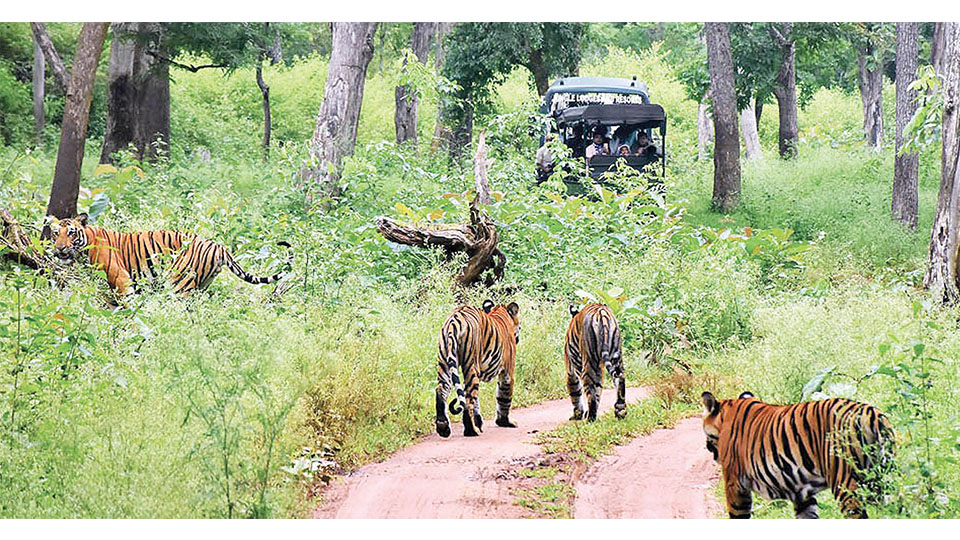New Delhi: India’s tiger population reached 3,682 in 2022, a significant increase from 2,967 in 2018, according to the report “Status of Tigers: Co-predators and Prey in India-2022,” released yesterday as part of the International Tiger Day celebrations.
The report was jointly released by the National Tiger Conservation Authority (NTCA) and the Wildlife Institute of India. This remarkable growth makes India the proud home to approximately 75 percent of the world’s tiger population.
This latest figure marks an upward revision from April this year when the Wildlife Institute of India, responsible for coordinating the quadrennial tiger census, estimated a minimum of 3,167 tigers. The new data also surpasses the 3,167 tigers announced by PM Narendra Modi in Mysuru on April 9 during the celebration of 50 years of Project Tiger, a globally acclaimed conservation effort.
The revised figures stem from meticulous analyses of census data collected during the fifth cycle of estimation conducted in 2022, further solidifying India’s position as a key tiger habitat.
This impressive growth represents a significant achievement over the past decade; in 2014, there were 2,226 tigers reported, a notable rise from 1,706 in 2010. The report reveals that in 2022, the highest number of tigers, 785, was reported in Madhya Pradesh, followed by Karnataka (563), Uttarakhand (560) and Maharashtra (444).
It is noteworthy that nearly a quarter of the tigers were reportedly found outside protected areas, indicating the need for enhanced protection measures, habitat restoration, ungulate augmentation, and subsequent tiger reintroduction in about 35 percent of India’s 53 tiger reserves, as highlighted by the Union Environment Ministry.
Madhya Pradesh stands out as a success story, with its forests witnessing an increase of 259 tigers in just four years, according to the survey. The State had faced a decline in tiger population from its number one position in 2006 to 2010 but reclaimed the top spot in 2018.
Meanwhile, Karnataka’s tiger numbers have shown fluctuations over the years, securing the first position in 2014 and now standing at secondplace in 2022.
The report also provides a breakdown of tiger numbers within the tiger reserve, with Corbett (260), Bandipur (150), Nagarahole (141), Bandhavgarh (135), Dudhwa (135), Mudumalai (114), Kanha (105), Kaziranga (104), Sundarbans (100), Tadoba (97), Sathyamangalam (85) and Pench-MP (77) being the top reserves in terms of tiger population.
Explaining the variation in numbers from the April announcement, Wildlife Institute of India Director V.K. Tiwari stated, “3,167 is the minimum count based on photographs of tigers, while 3,682 is the population estimate arrived at through extrapolation of all data, including pictures, pug marks, and other sign indicators like scat.”








Recent Comments